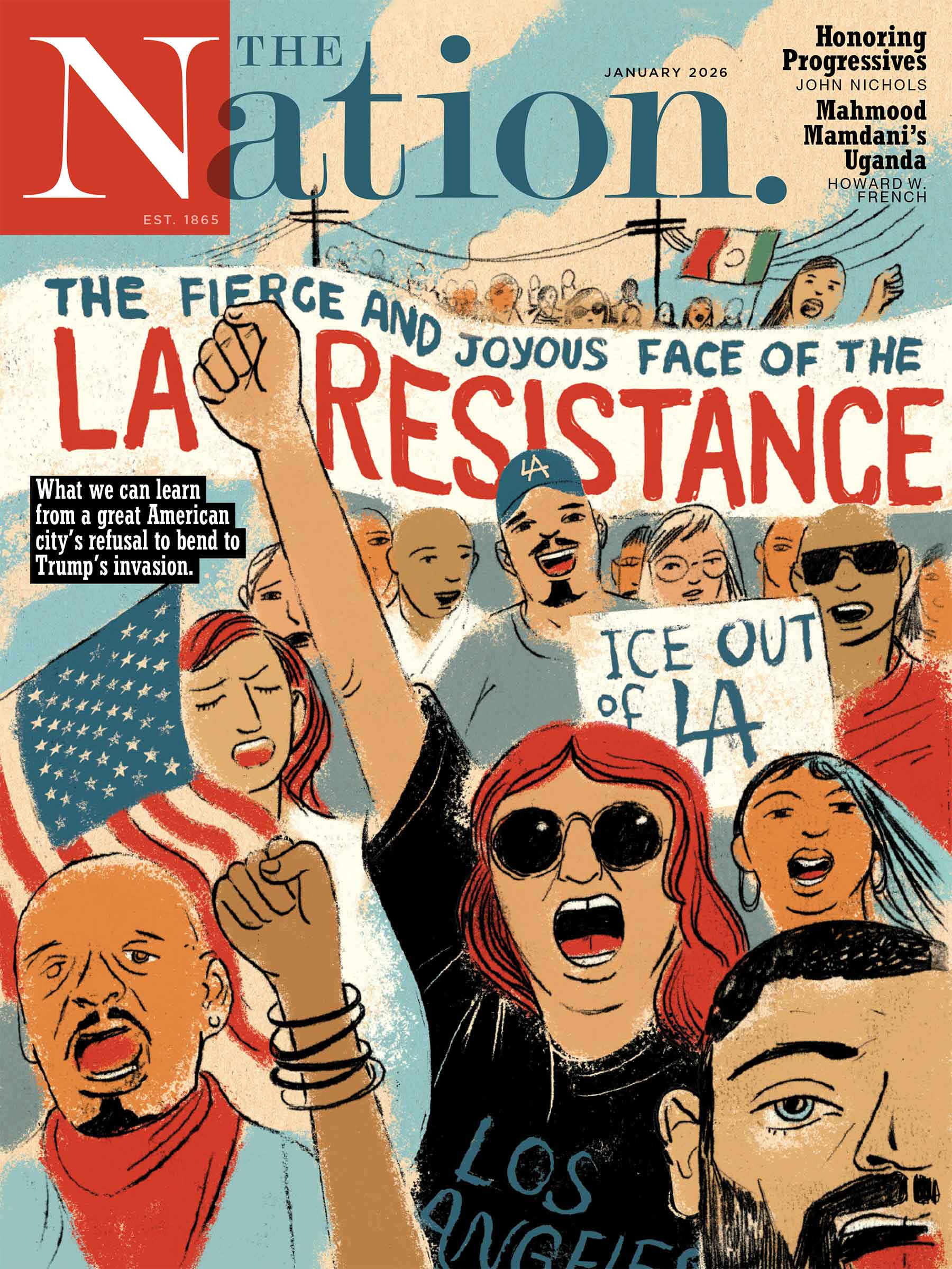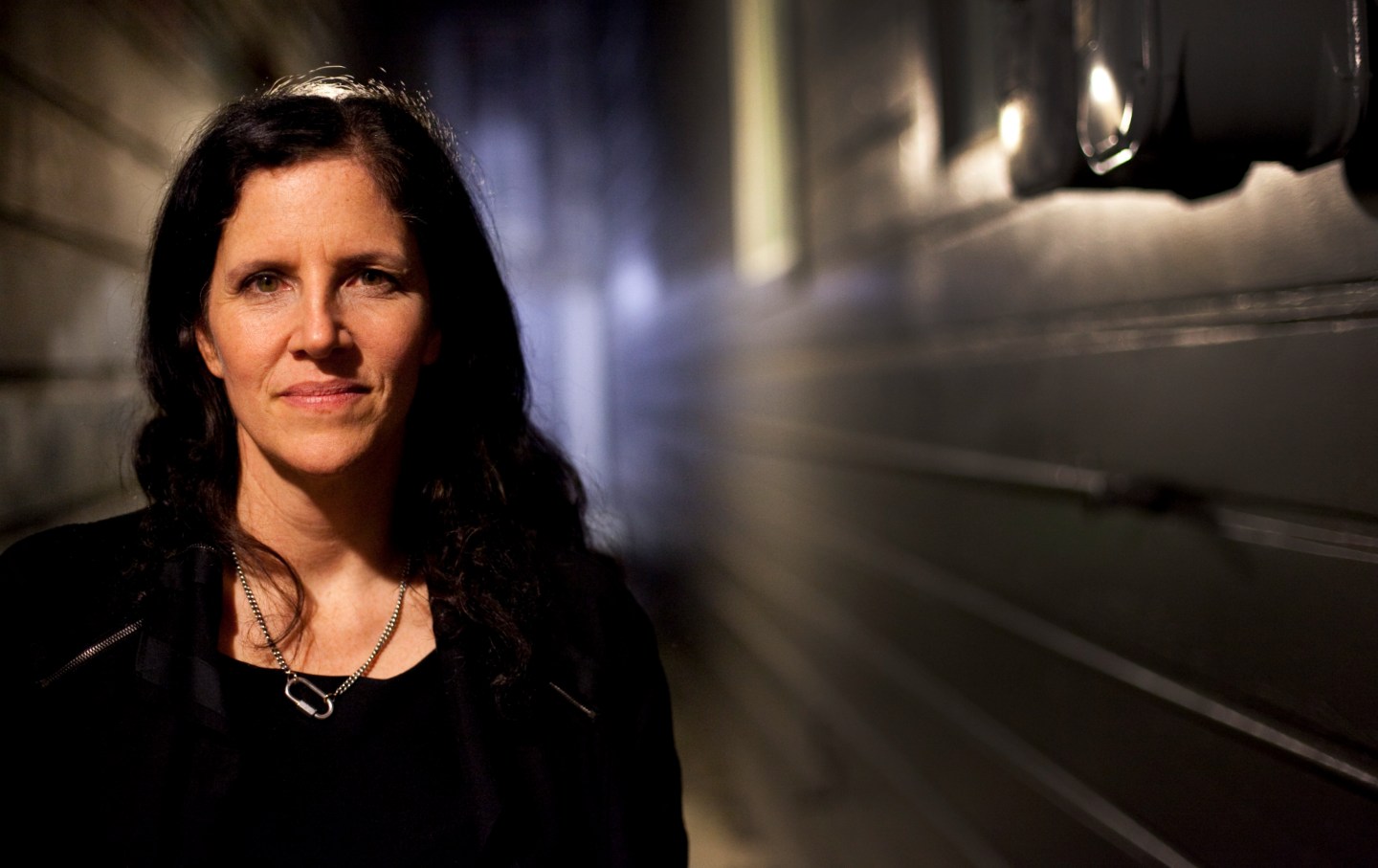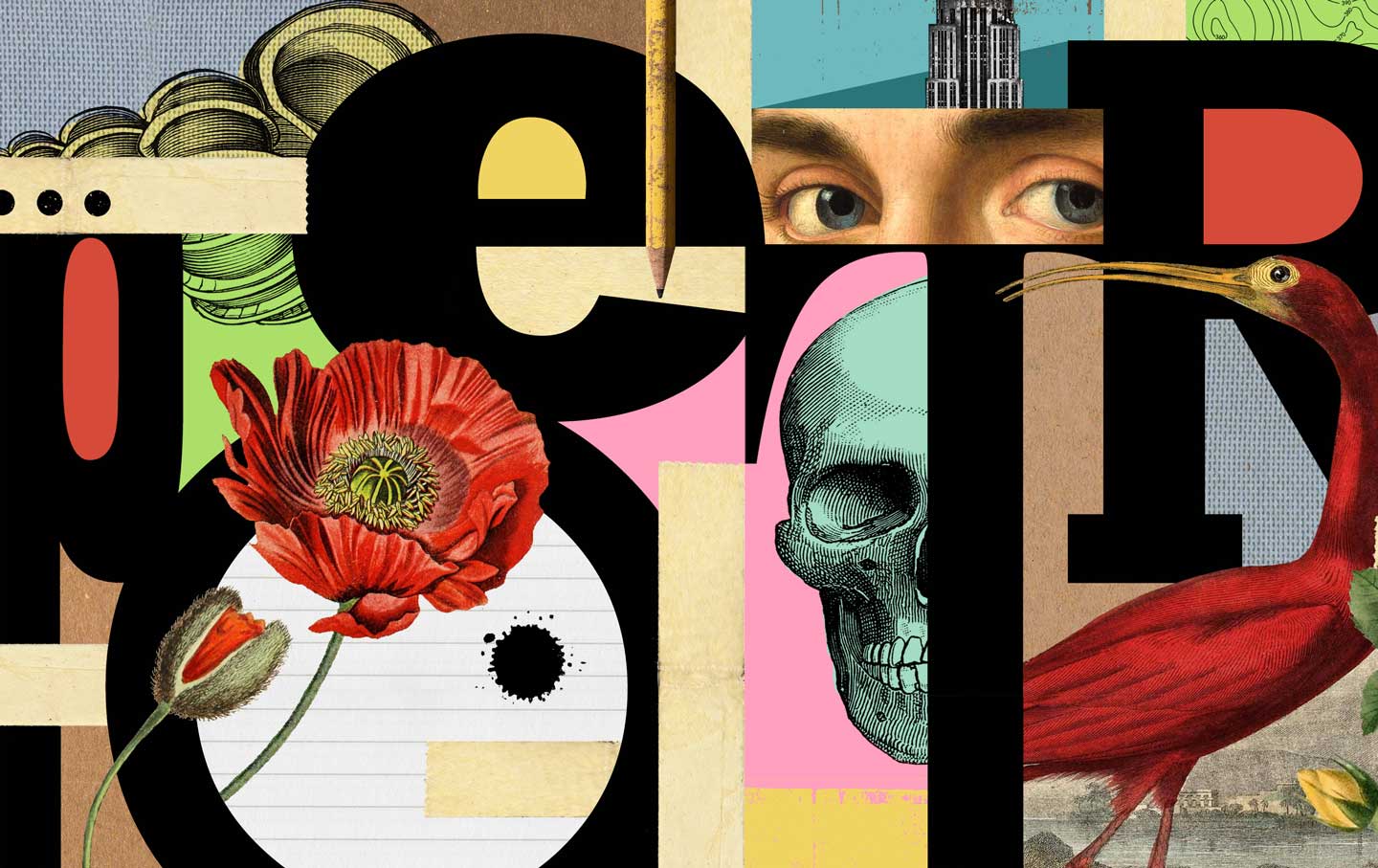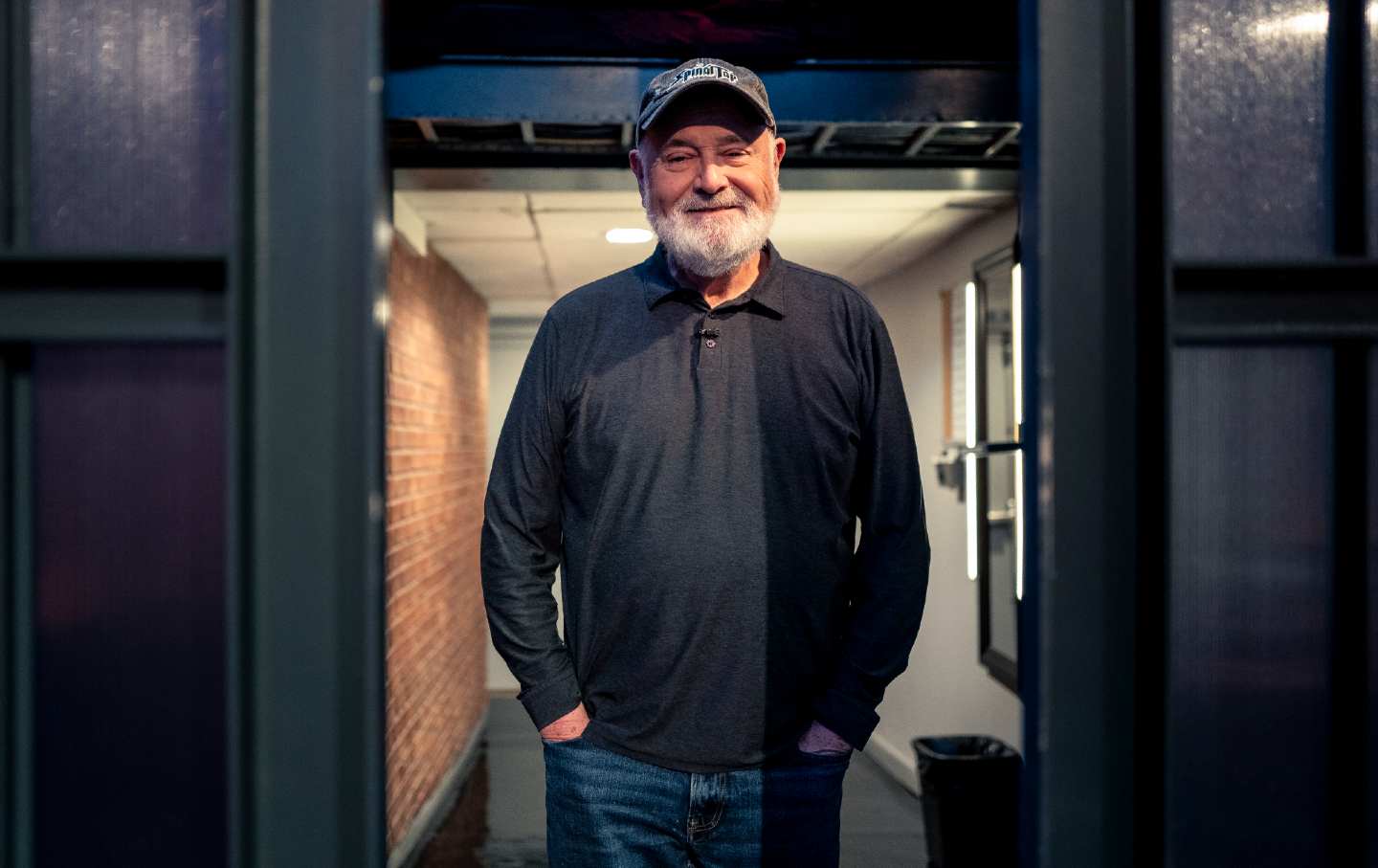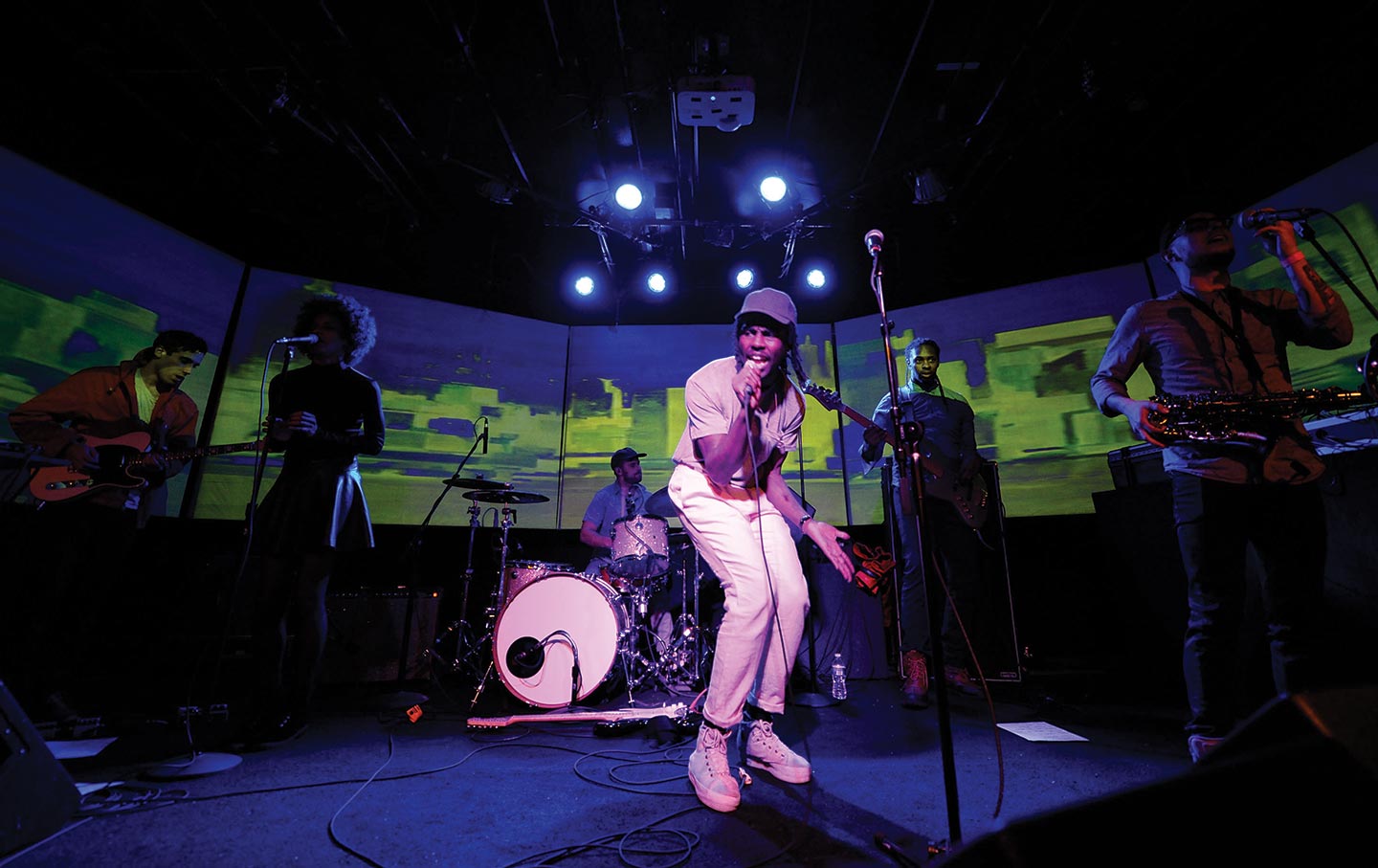The Nation’s Early Experiments in Jazz
The Nation’s Early Experiments in Jazz
When the magazine began covering jazz in the 1920s, it often struggled to catch the beat.
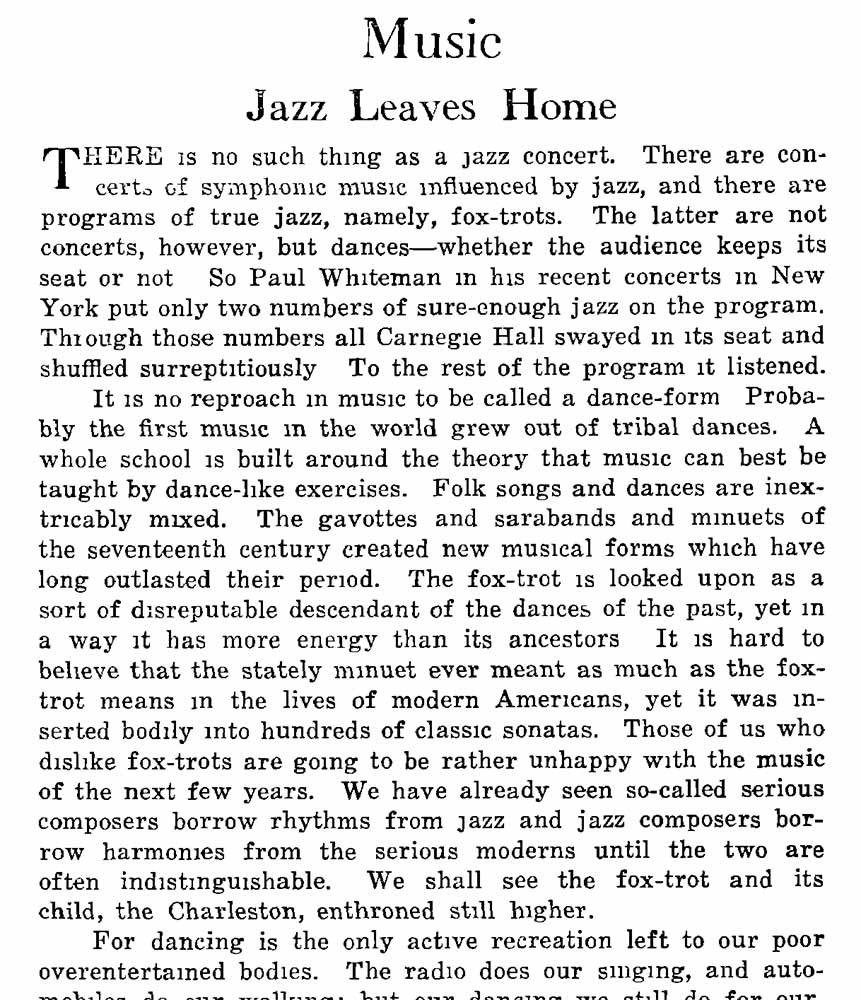
Ethan Iverson writes in this issue about a newly surfaced recording of pianist McCoy Tyner and saxophonist Joe Henderson playing at the downtown club Slugs’ in 1966. Reading his piece, I wondered how The Nation covered the advent of jazz a century ago.
Edited by the gentlemanly class traitor Oswald Garrison Villard, the magazine was turning ever more politically radical, yet it remained culturally somewhat conservative. Its early coverage of jazz reflected both tendencies, signaling an openness to the emerging form even as it offered a rather patronizing take on the music’s significance.
“There are times,” the critic Henrietta Straus reluctantly granted in early 1922, “when jazz may be regarded as a virtue.”
Straus was talking about a new concert by the classically trained white interpreter John Alden Carpenter, whom she praised for having turned the “noisy commentaries” of jazz into “philosophic reflections.” Within two years, she had adopted a more generous appraisal of the form—she described the white bandleader Paul Whiteman’s now-famous “An Experiment in Modern Music” concert, in which he premiered George Gershwin’s Rhapsody in Blue, as nothing less than “revolutionary.” Even so, for her, as for other Nation contributors, jazz—or, at least, the jazz they deemed worth discussion—was a white phenomenon, stripped of its African American roots. It would take another decade for the magazine to give equal attention to Black musicians.
Some Nation writers went out of their way to avoid discussing race in their critiques of the new music, even as loaded language seeped through nonetheless. “Industrialized folk-music” is how William J. Shultz described jazz in the October 25, 1922, issue of The Nation. “It is at once the old and the new.”
Traditional European folk music, Schultz explained, had reflected the bucolic concerns of “the great, silent, subject, agricultural population. Their music was a music of out-of-doors…a music of physical merrymaking, a music that looked away from weary body-labor, yet ever reflected its shadow through the wildest abandon.” Jazz, in contrast, was an expression of the modern age. It addressed the desires and concerns of the Massemensch (mass-man), “a creature of paved and lighted streets and grimed air.”
Shultz saw jazz as the culmination of a long cultural decline that began with the French Revolution and the dwindling of landed aristocracies that had long supplied funds for the creation of “intellectualized music.” The dilettantish nouveaux riches who took over as supporters of the arts “sought only for the less exacting sensuous appeal in music.” The result: “From Schubert through Schumann, Wagner, the Russian school, Richard Strauss, to Stravinski and Schoenberg, romantic music has been letting down the high standards of the classic era…trying to cover its retreat by criticizing the older music as dry and formal.” Modern composers had become mere “experimentor[s] in cacophony.”
Still, at least jazz wasn’t pretentious. “It does not play the hypocrite or deceive itself by talking glibly in the cant of art,” Shultz wrote. “Our contempt for jazz is snobbery…. The cognoscenti, like the poor, are always with us; theirs be the kingdoms of romantic and classic music. The jazzists will never dispute them their possessions.”
Disobey authoritarians, support The Nation
Over the past year you’ve read Nation writers like Elie Mystal, Kaveh Akbar, John Nichols, Joan Walsh, Bryce Covert, Dave Zirin, Jeet Heer, Michael T. Klare, Katha Pollitt, Amy Littlefield, Gregg Gonsalves, and Sasha Abramsky take on the Trump family’s corruption, set the record straight about Robert F. Kennedy Jr.’s catastrophic Make America Healthy Again movement, survey the fallout and human cost of the DOGE wrecking ball, anticipate the Supreme Court’s dangerous antidemocratic rulings, and amplify successful tactics of resistance on the streets and in Congress.
We publish these stories because when members of our communities are being abducted, household debt is climbing, and AI data centers are causing water and electricity shortages, we have a duty as journalists to do all we can to inform the public.
In 2026, our aim is to do more than ever before—but we need your support to make that happen.
Through December 31, a generous donor will match all donations up to $75,000. That means that your contribution will be doubled, dollar for dollar. If we hit the full match, we’ll be starting 2026 with $150,000 to invest in the stories that impact real people’s lives—the kinds of stories that billionaire-owned, corporate-backed outlets aren’t covering.
With your support, our team will publish major stories that the president and his allies won’t want you to read. We’ll cover the emerging military-tech industrial complex and matters of war, peace, and surveillance, as well as the affordability crisis, hunger, housing, healthcare, the environment, attacks on reproductive rights, and much more. At the same time, we’ll imagine alternatives to Trumpian rule and uplift efforts to create a better world, here and now.
While your gift has twice the impact, I’m asking you to support The Nation with a donation today. You’ll empower the journalists, editors, and fact-checkers best equipped to hold this authoritarian administration to account.
I hope you won’t miss this moment—donate to The Nation today.
Onward,
Katrina vanden Heuvel
Editor and publisher, The Nation
